If you have read the 2003 novel The Devil in the White City: Murder, Magic, and Madness at the Fair That Changed America by Erik Larson, then the name Daniel Burnham is probably familiar to you. The book is a fascinating read intertwining the stories of architect Daniel Burnham, project coordinator for the 1893 Chicago World Columbian Exposition and an infamous serial killer Dr. H.H. Holmes. Herman Webster Mudgett (aka Dr. H. H. Holmes) was a serial killer who used the fair to lure his victims to their deaths. Dr. Holmes had built his “World’s Fair Hotel” complete with a gas chamber, dissection table, and a crematorium to dispose of the bodies. Holmes would remove the skeletons of his victims and sell them for medical and scientific study.
Leonardo DiCaprio purchased the film rights to the book in 2010.
In April 2014, I attended the U.S. Travel Association’s IPW convention in Chicago and participated in a day trip tour focused on the 1893 World Columbian Exposition or “Chicago World’s Fair” as it is also called.
The 1893 Columbian Exposition in Chicago was a celebration of the 400th anniversary of Columbus’ landing in the New World. The fair ran six months from May 1 to October 31, 1893.

‘White City’ is the nickname given to the 1893 Exposition in large part due to the white stucco on the Beaux Arts style buildings. Hundreds of thousands of electric light bulbs illuminated the fairgrounds allowing the fair to remain open at night. For many of the 27 million visitors to the Chicago Fair, the White City was their first glimpse of extensive electrical lighting and the future.
Over 200 buildings were built to create the fair, but they were only meant to be temporary. The White City is said to have inspired author L. Frank Baum to create the Emerald City in his book The Wizard of Oz.
White City photo caption, Field Museum, Chicago
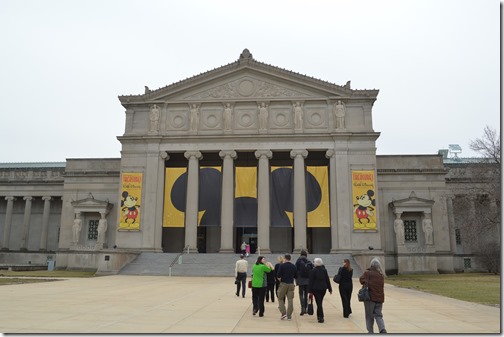
The Palace of Fine Arts is the only building remaining from the extensive set of buildings constructed by America’s leading architects for the 1893 Columbian Exposition. The building now houses Chicago Museum of Science and Industry.
Field Museum, 1893 Chicago World’s Fair and Ferris Wheel
Field Museum in Chicago is a product of the 1893 Chicago Fair. After the Columbian Exposition closed, the building that houses Chicago’s Museum of Science and Industry today became the Columbian Museum of Chicago. Retail merchant Marshall Field financed the museum project to preserve many of the exhibits brought to Chicago for the 1893 Columbian Exposition. The museum name was changed to Field Museum of Natural History in 1905 and the museum site was moved to its current location in Chicago in 1921 near Soldier Field football stadium and Shedd Aquarium.
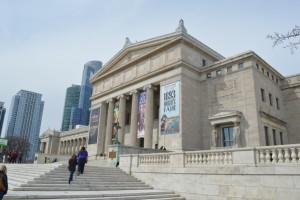
Field Museum of Natural History featured a special exhibition from October 2013 to September 2014: Opening the Vaults: Wonders of the 1893 World’s Fair. Many of the artifacts on display had not been seen by the public for 120 years.
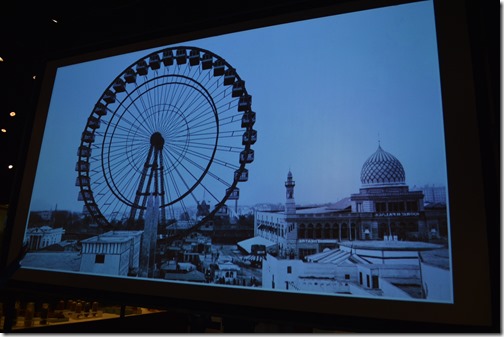
What I found most fascinating in the Field Museum exhibit was 1893 film footage of the Columbian Exposition.
Ferris Wheel
The most popular attraction of the 1893 Columbian Exposition, and perhaps the legacy from the 1893 Chicago World’s Fair most familiar to people today is the Ferris Wheel. The Ferris Wheel was designed for the Columbian Exposition. The massive engineering marvel stood at 250 feet tall with each car capable of carrying 60 people. It had 36 cars and carried 2,160 people when fully loaded.
After traveling to Chicago once a year from 2010 to 2013, and every trip listening to people rave about The Devil in the White City, I read the book last summer. The Ferris Wheel is covered in depth in the novel as an engineering marvel and potential engineering disaster for the fair if there had been a structural failure.
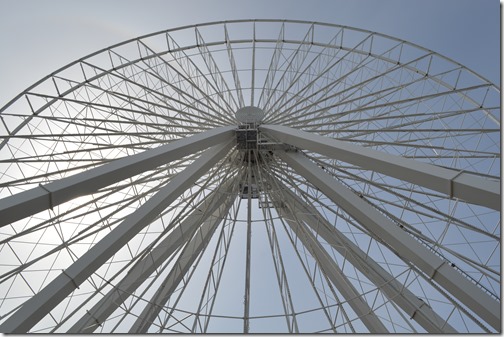
The Ferris Wheel at Chicago Navy Pier is only 150 feet tall, 100 feet shorter than the original Ferris Wheel built in 1893.
Frederick Law Olmsted laid out the grounds and designed lagoons for the 1993 Chicago Columbian Exposition with more than one square mile of fairgrounds in south Chicago. More than 40,000 laborers constructed the buildings, where more than 65,000 exhibits were displayed. Olmsted is the landscape architect who designed New York’s Central Park.
Daniel Burnham as Director of Works for the 1893 Columbian Exposition is a name you will find all over Chicago. Daniel Burnham designed the Plan for Chicago published in 1909. Much of the lakefront of Chicago developed from this master plan, including the 1916 Navy Pier built four years after Burnham’s death.
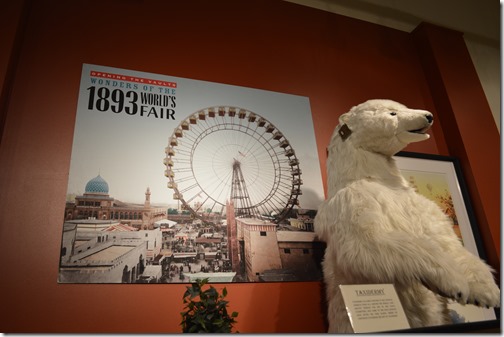



1 Comment
Comments are closed.